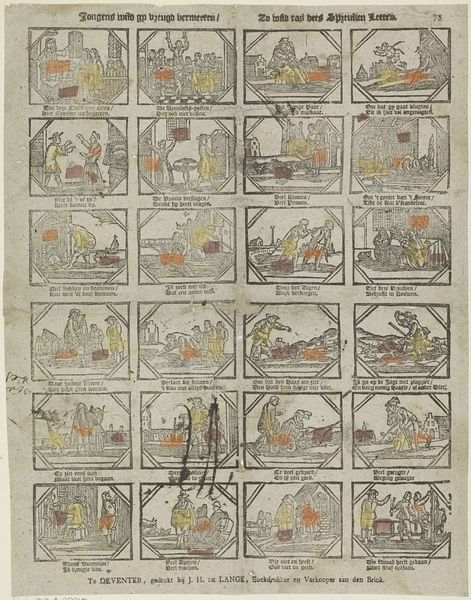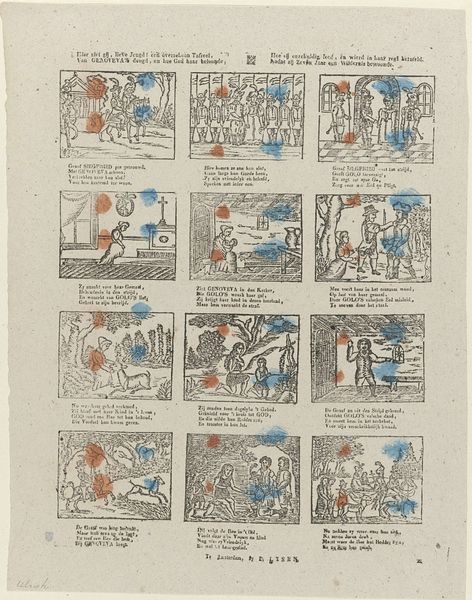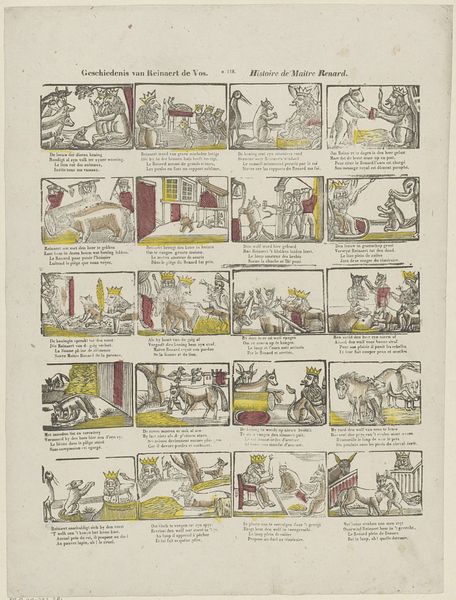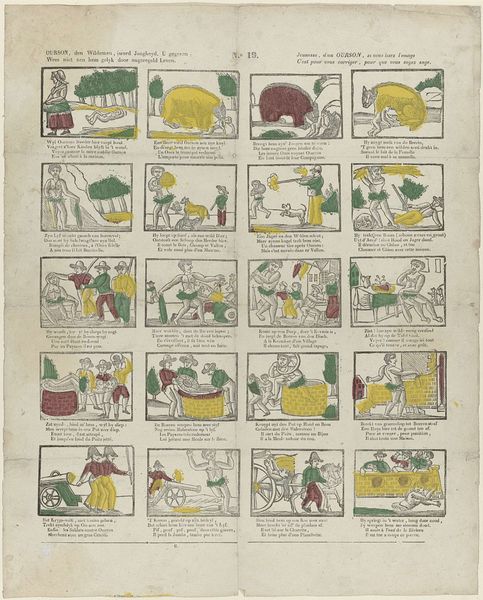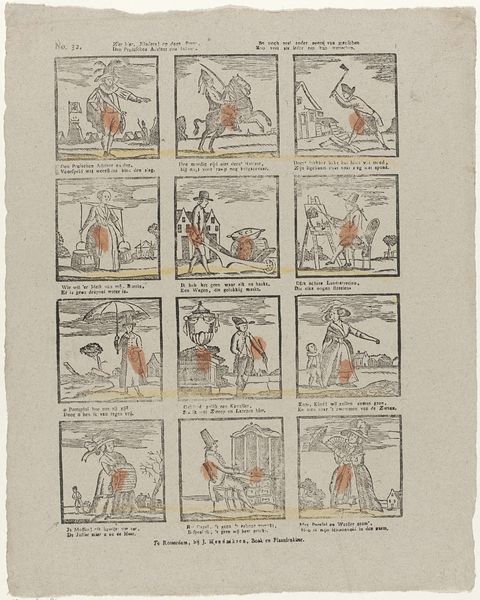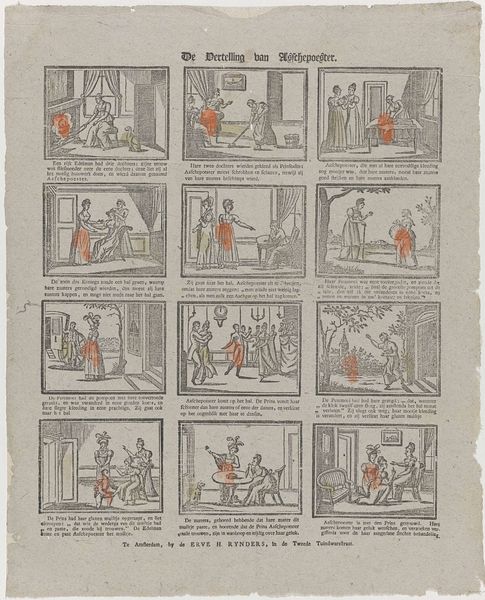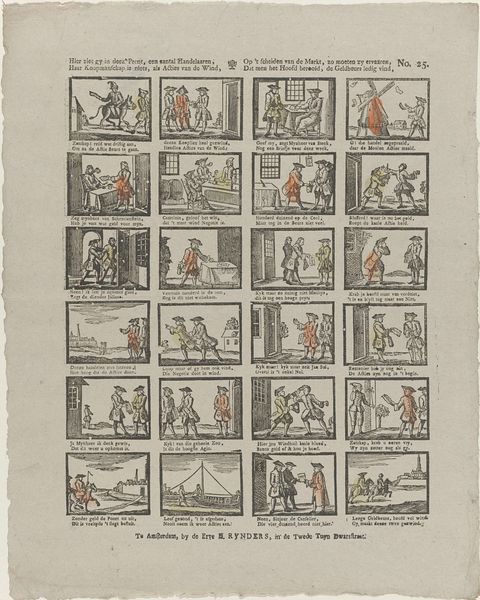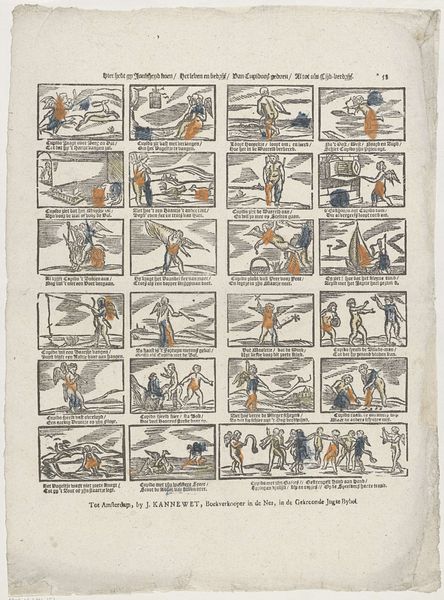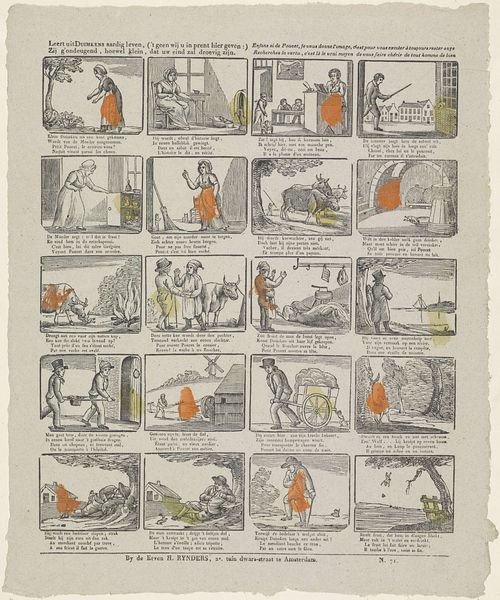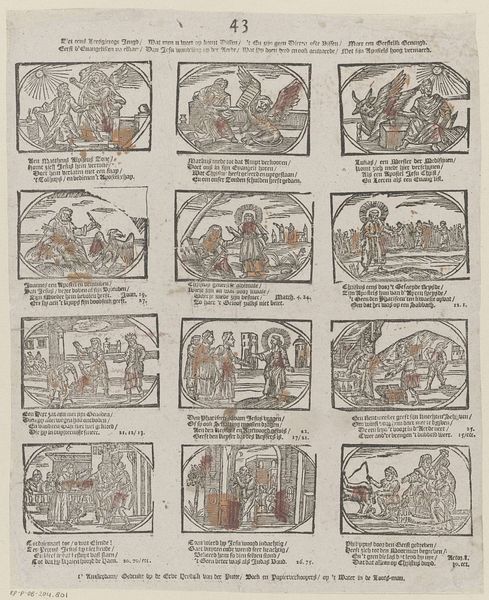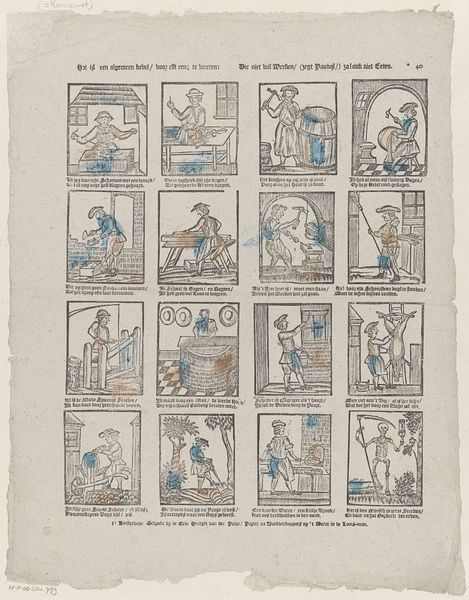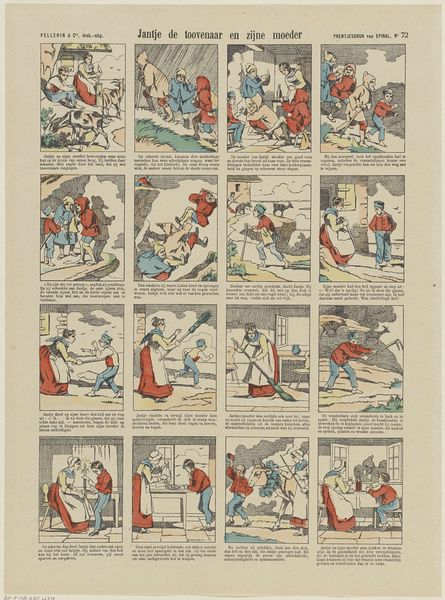
Ourson, de wildeman, word, jongheid, u gegeven: / Weest niet aan hem gelyk door ongeregelt leven / Jeunesse d'un Ourson, si vous lisez l'image, / C'est pour vous corriger, pour que vous soyez sage 1800 - 1854
0:00
0:00
print, engraving
#
narrative-art
#
comic strip
# print
#
figuration
#
folk-art
#
comic
#
line
#
genre-painting
#
engraving
Dimensions: height 385 mm, width 315 mm
Copyright: Rijks Museum: Open Domain
This morality print, made by Erve H. Rynders in Amsterdam, likely in the late 1700s, employs an accessible medium to convey its message. It's a woodcut, a relief printing technique that allows for the creation of multiple impressions. The coarse lines and simplified forms are inherent to the process; the artist would have carved away the negative space from a block of wood, leaving the lines to be inked and printed. The addition of color, likely applied by hand, adds another layer of accessibility. Consider how the choice of woodcut, a relatively inexpensive and easily reproduced medium, reflects the artwork's intended audience. This wasn't meant for a wealthy patron's collection, but for wider distribution, perhaps even as an inexpensive broadside sold on the street. The labor-intensive process of carving the woodblock, combined with the potential for mass production, speaks to the changing dynamics of art, labor, and consumption in the 18th century. It blurs the lines between fine art and popular culture.
Comments
No comments
Be the first to comment and join the conversation on the ultimate creative platform.
